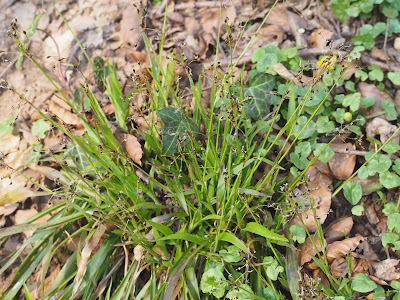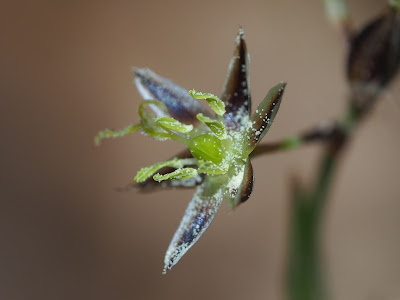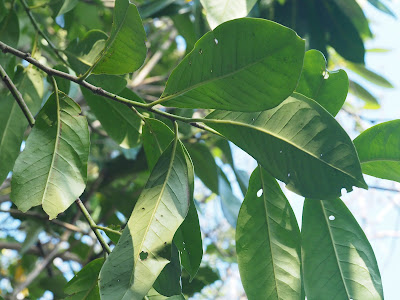Common name: Hairy Wood-rush
Scientific name: Luzula pilosa
Genus: Luzula 地楊梅屬
Family: Juncaceae 燈心草科, rush family
Remarks: There are two genus in Juncaceae in UK, there differences are as follows:
a/ Juncus 燈心草屬 (rushes): leaves usually cylindrical or channelled; glabrous;
b/ Luzula 地楊梅屬 (wood-rushes): leaves grass-like; hairly at base, at least when young
Origin: native
Date: 25th & 27th March
Several plants are living together; can grow to 30 cm high.
Leaves are grass-like, hence it is belonged to Luzula 地楊梅屬.
Note the leaves are hairy; basal leaves 3-4 mm wide (vs basal leaves 1.5-3 mm wide in Luzula forsteri, the southern wood-rush)
upper side (adaxial surface) of the leaf

lower surface (abaxial surface) of the leaf (the leaf slightly below the middle of the photo)
leaf on the stem (see the green structure in the middle of the photo)
stipule (the green leaf-like structure beside the inflorescence)
Flowers borne singly in inflorescence (vs in groups of 2 or more in other Luzula spp.). Note the inflorescence branches are spreading, i.e. in different direction (vs inflorescence branches dropping to one side in Luzula forsteri, the southern wood-rush)
enlarged below to see the flowers:

flower bud, closed flower or female stage of the dark brown flower ?
fully opened flower; 6 stamens; 1 style
enlarged below:
enlarged below:
This is an older flower with the anther already split and stigma withering a little bit
enlarged below:
5 petals, 5 stamens. 1 style
fruits


























































